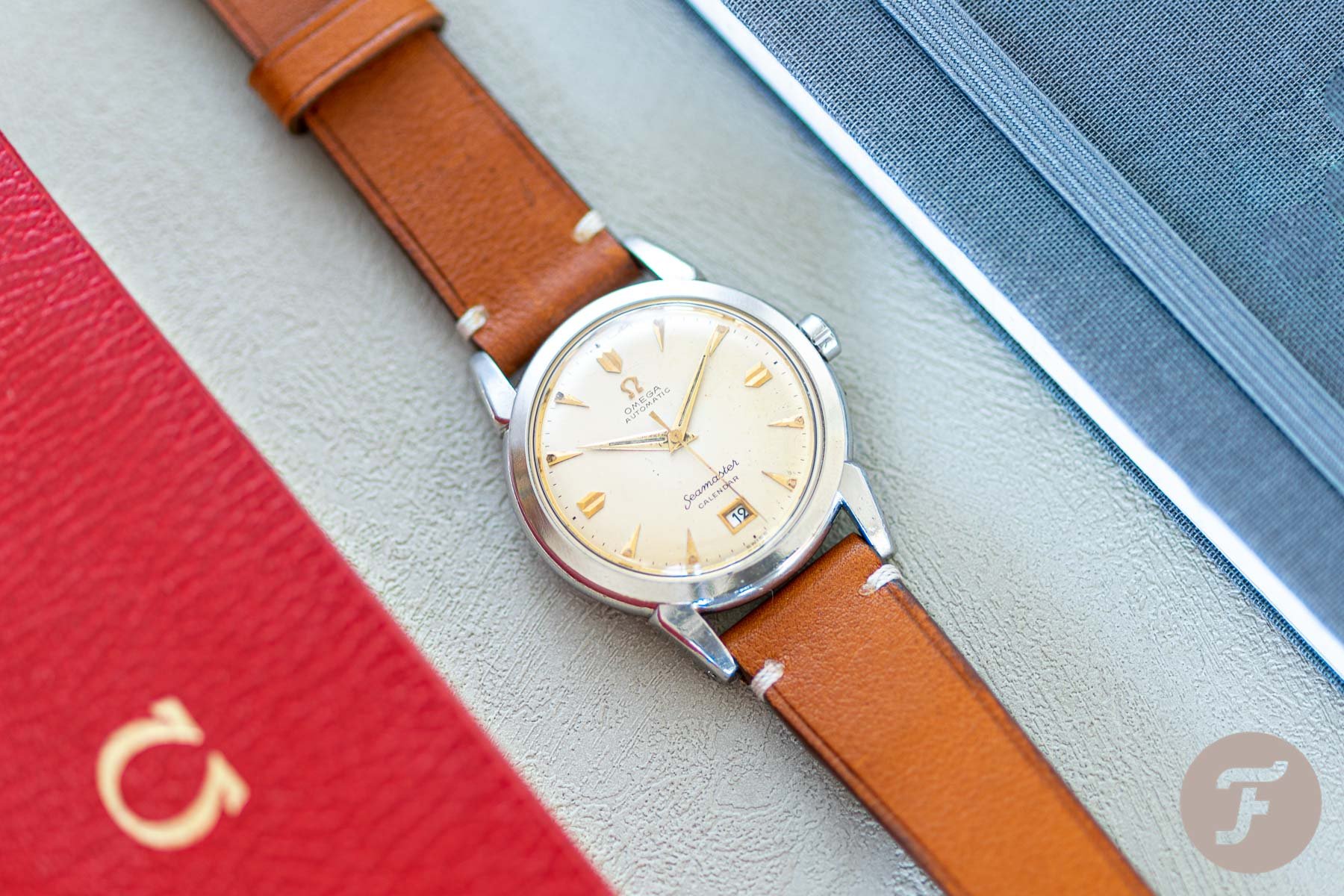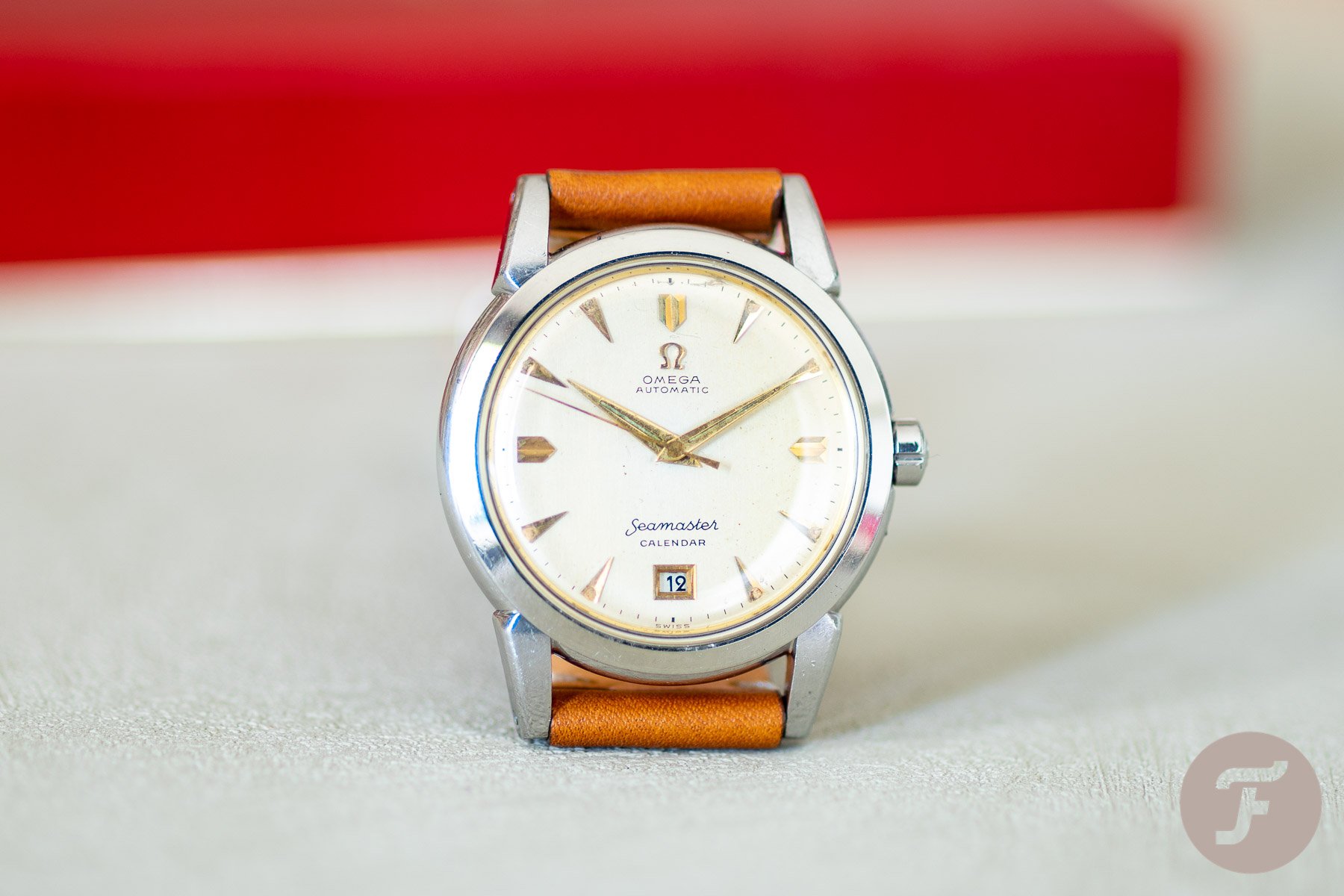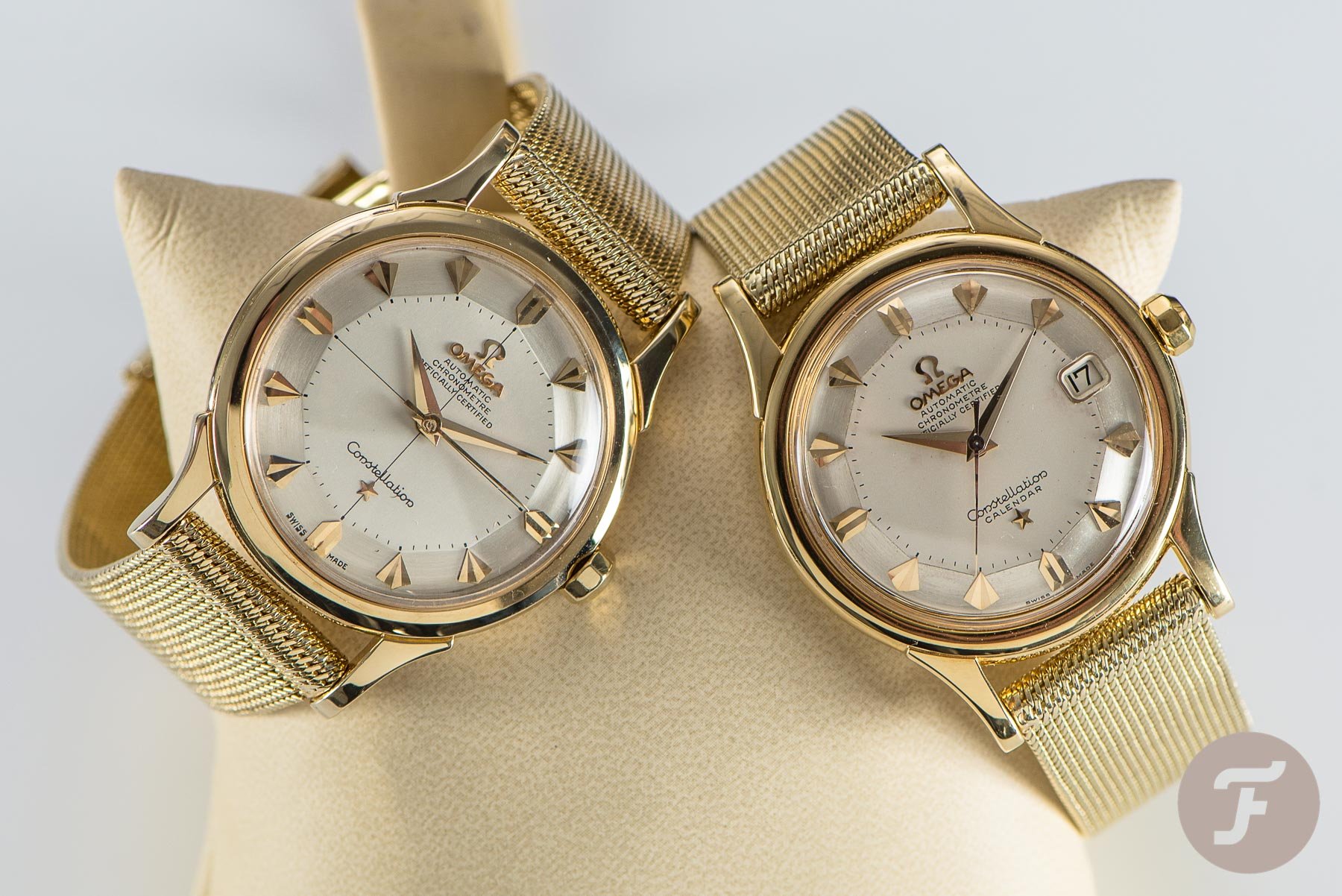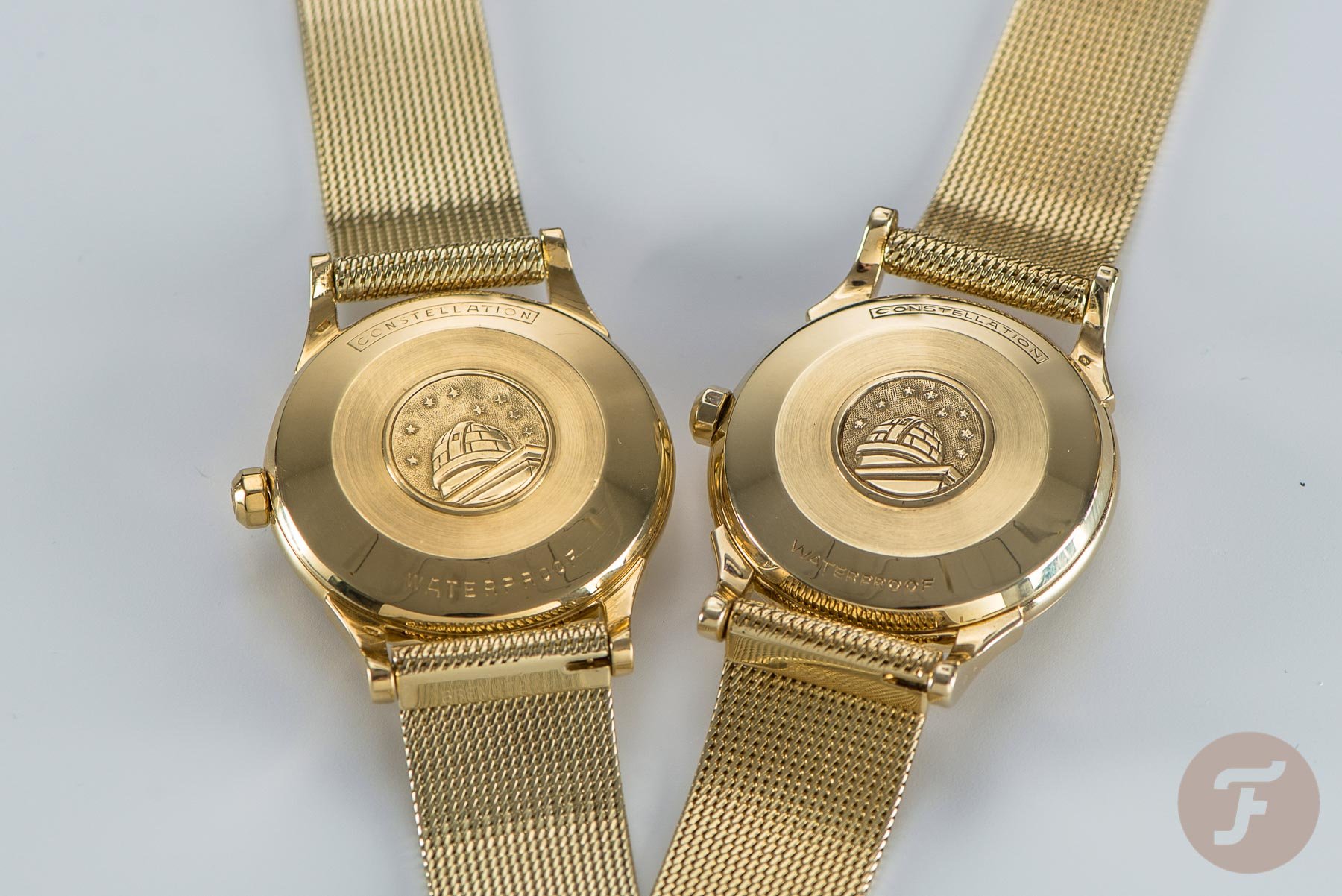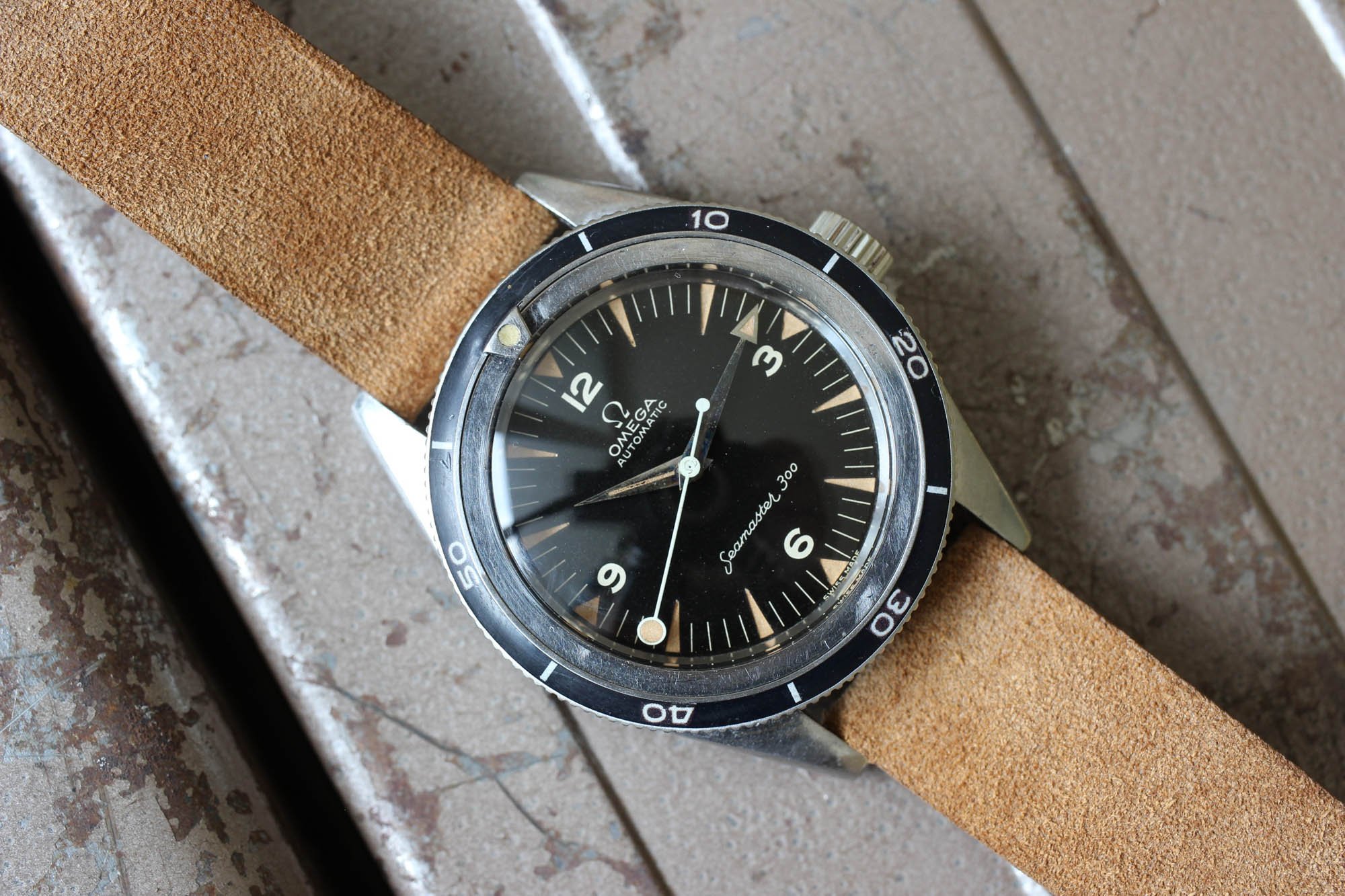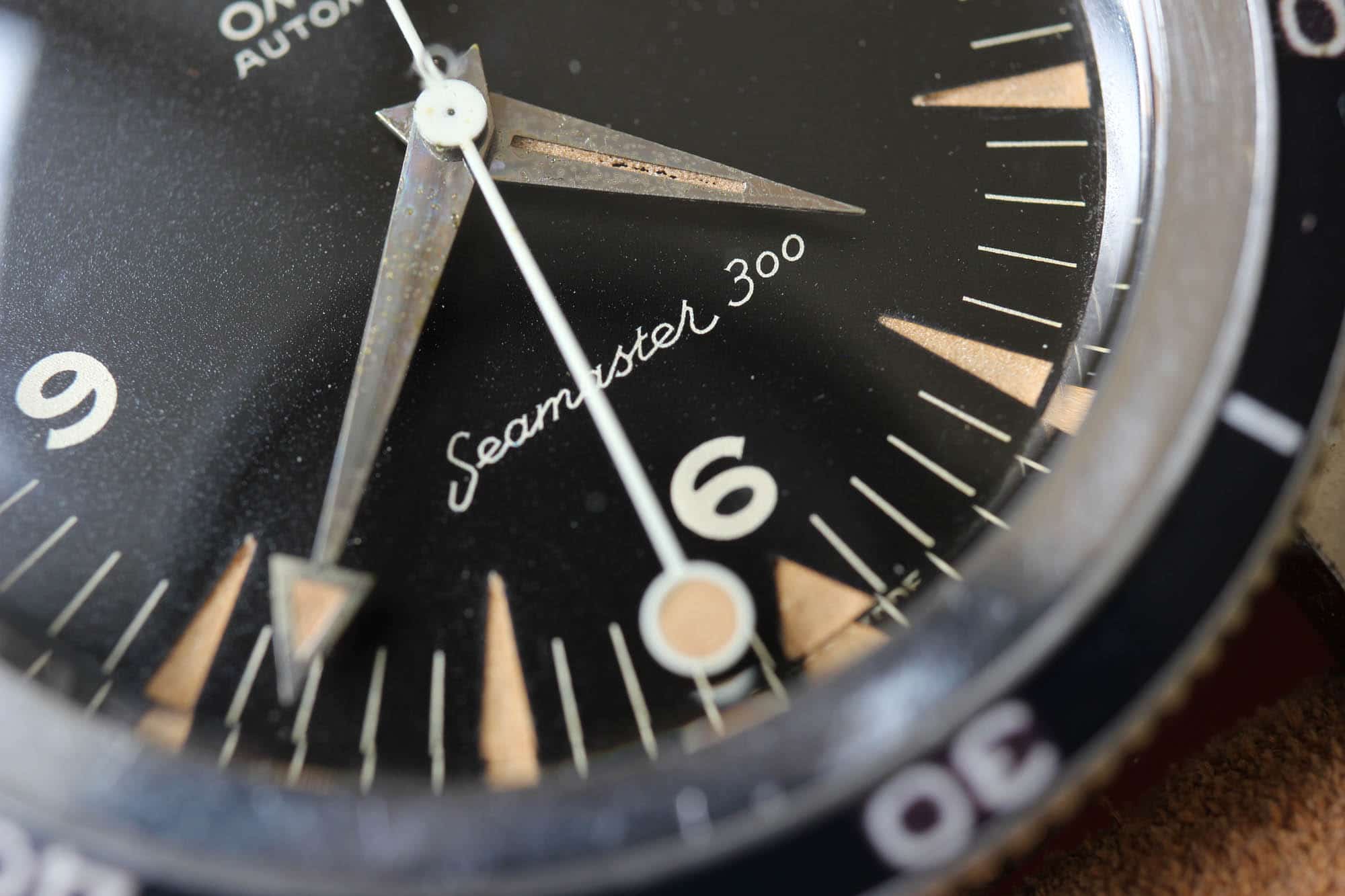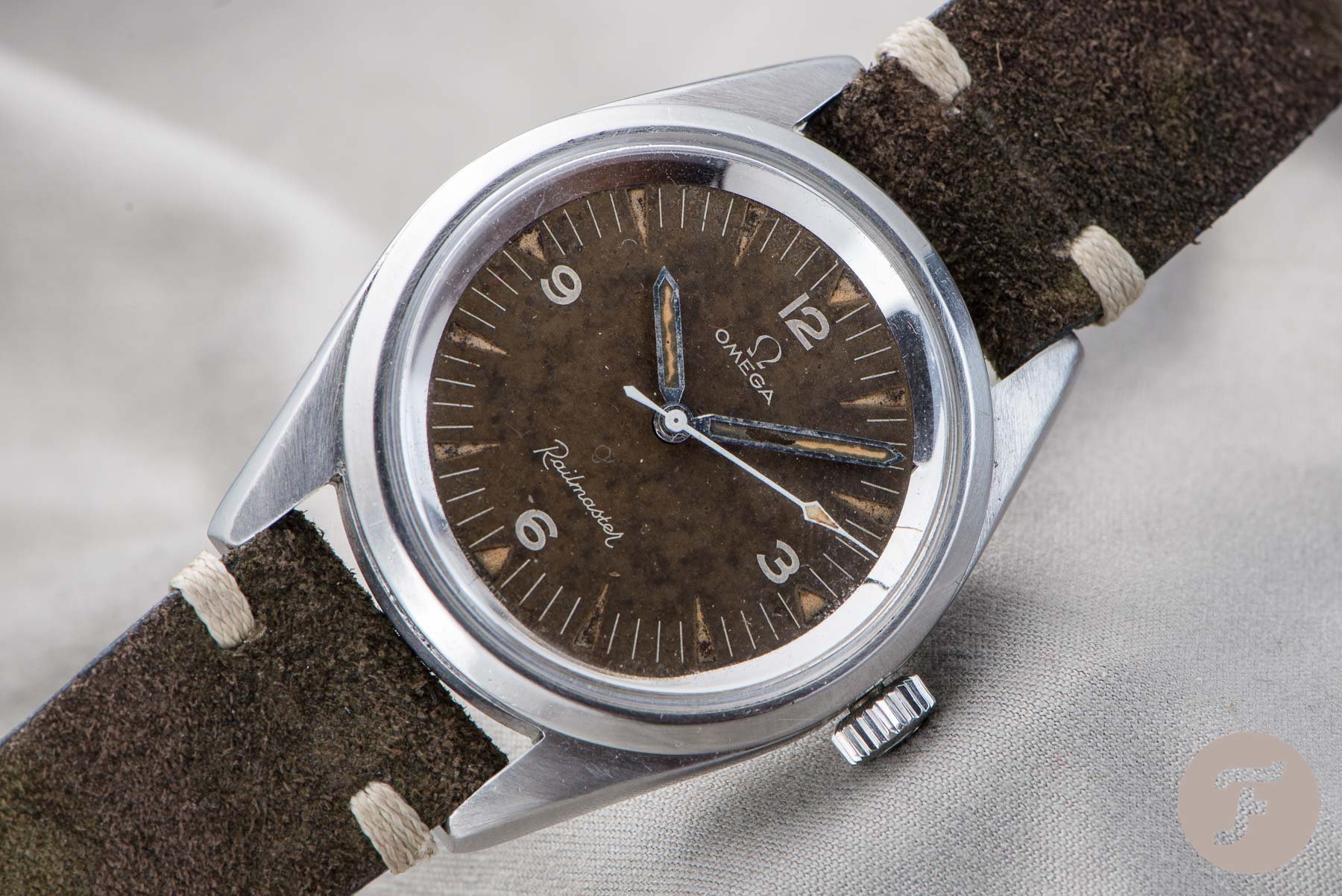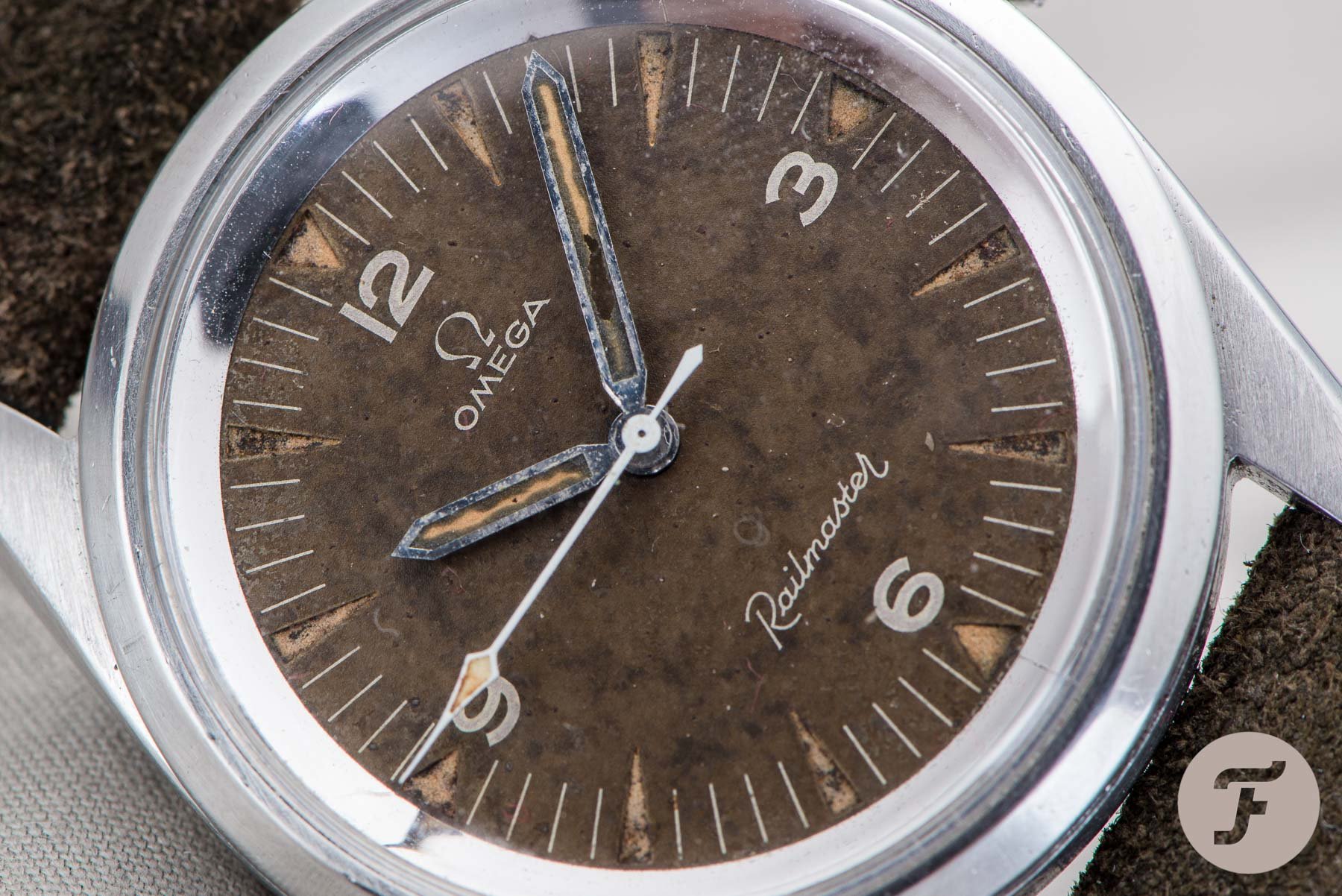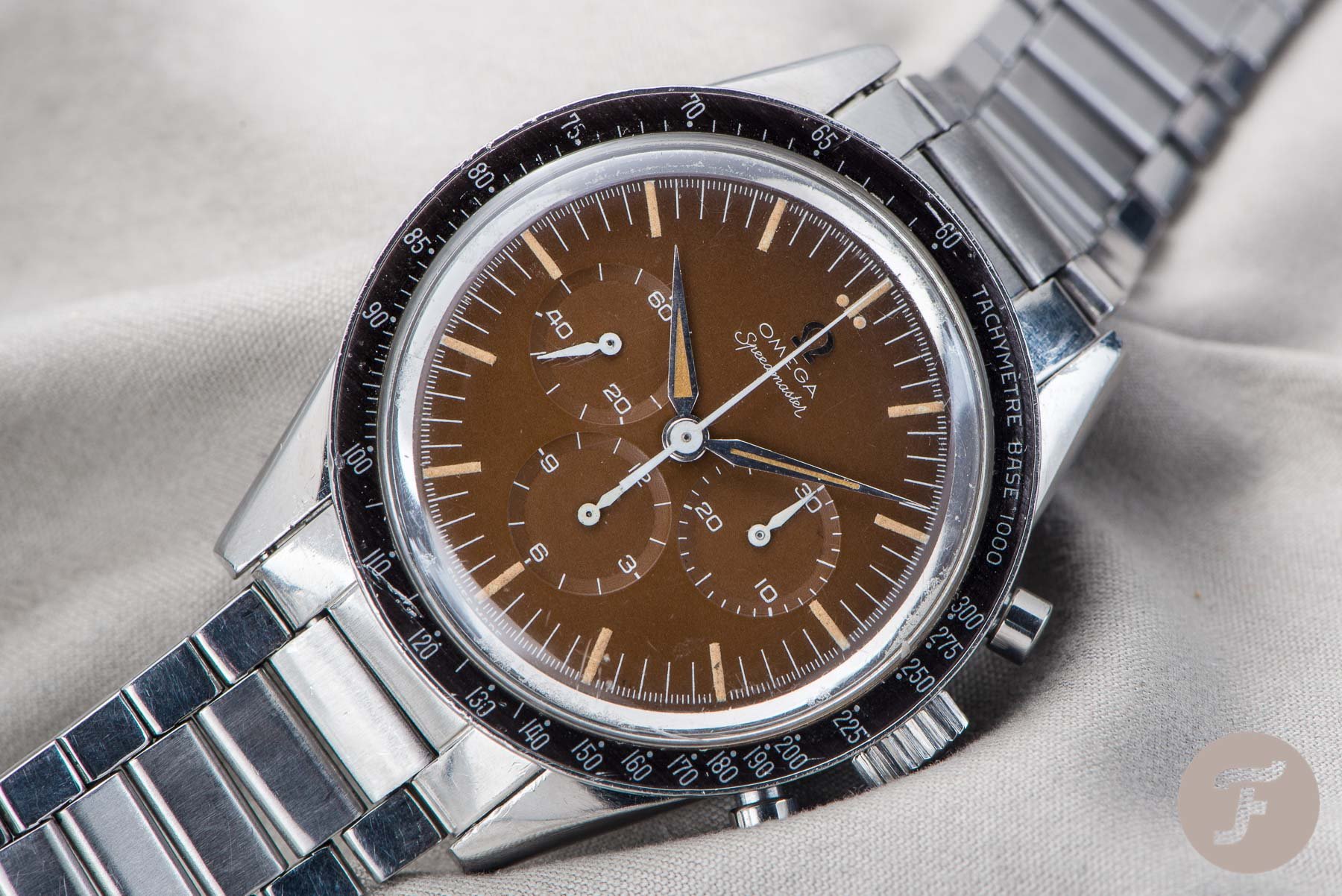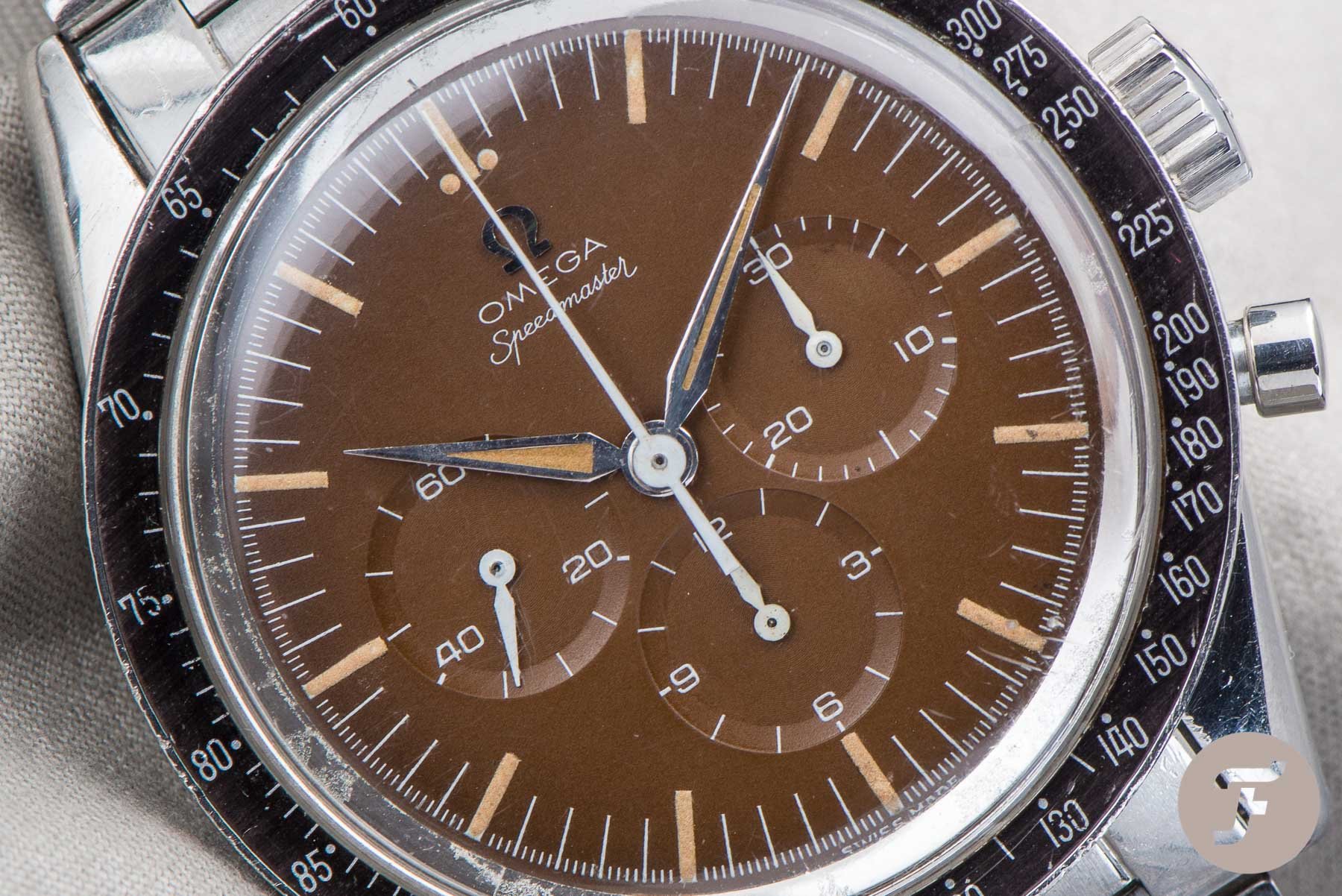Buying Guide: The Best Omega Watches From The 1950s
We like to talk about vintage watches a lot within the Fratello team. Where the daily routine is largely focused on the most recent developments in the world of watches, the most fun for many of us lies in the world of vintage watches. It’s a world full of history, remarkable watches, incredible stories, and quirky details. It inspired us to come up with a series of articles focusing on the best watches per decade from a select group of brands. Some of them priceless, some of them still affordable. But all of them are remarkable watches. In this second installment, we will take a look at the best Omega watches from the 1950s.
The best Omega watches from the 1950s? What does that actually mean? Every week we try to come up with a small selection of special watches for several reasons. Maybe they are the icons, maybe they are the affordable options, maybe they are technically brilliant, or maybe they look amazing. It can be anything really as long as they stand out. We’ll try and mix up things as much as possible and define an entry-point watch, my preferred choice, and we’ll close out by the icons where the money is no object.
A decade that defined Omega
The 1950s was the decade that shaped Omega into the brand it has become today. Obviously, there is a great history before that. But in the 1950s, Omega introduced a series of new models that shaped the world of watchmaking as we know it today. As a result, it is hard to ignore the iconic Omega trilogy of the Speedmaster, Seamaster, and Railmaster for this list. But we all know there is more to the brand. Especially in the 1950s, as the trilogy was introduced in 1957. So let’s find out what some of Omega’s best watches from the 1950s are.
The entry-point — Omega Seamaster Calendar ref. 2627
Exploring the world of Omega in the 1950s leads to finding tons of different Omega Seamaster references. The Omega Seamaster was introduced in 1948 and was inspired by the watches Omega supplied the British Air Force with during World War II. The first Omega Seamaster was inspired by those watches and transformed into the perfect watch for civilians. The reason was more than logical. During the war, the Omega’s used by the British Air Force proved to be very valuable to the British soldiers. They were reliable, water-resistant, accurate, easy to repair, and incredibly robust. It proved to be the perfect ingredients for introducing the Omega Seamaster in 1948 for consumers.
Seamasters that looked almost identical to some of the Constellations.
Omega released a wide array of references with different movements, dial executions, and materials in the years to follow. In the mid-1950s, we even saw Seamasters that looked almost identical to some of the Constellation models. It makes researching vintage Seamasters and Constellations confusing at times, incredibly time-consuming but, most of all, tons of fun. If you are looking for an affordable way into the world of vintage Omega watches, the Seamaster is your way in. My personal favorites from the 1950s are the models closest to the 1948 originals. I love the original Seamasters from 1948 (CK 2518 and CK 2577), and it’s also why I have an incredible soft spot for the 2018 Anniversary Editions. Despite the controversial case back, the increased 38mm makes it easier to wear than some of the vintage pieces that are significantly smaller.
The first Seamaster with a calendar
The Omega Seamaster Calendar ref. 2627 is the first Seamaster featuring a date indication and is a very modest 35.3mm. The Seamaster Calendar ref. 2627 was introduced in 1952 and came with a steel case of a 14K gold-capped steel case. Later, Omega added 18K gold models as well. Omega also introduced a variety of dial colors and dial executions. Our Fratello team member Balazs owns a beautiful Seamaster ref. 2627 you see pictured. In his article about the watch, Balazs explains all the ins and outs about the ref. 2627.
Even better when it has a 3, 9, 12 dial
Despite Balazs’ watch being an absolute peach, I love the ref. 2627 even better when it has a 3, 9, 12 dial with the date aperture neatly tucked away at 6 o’clock. I like that dial layout referring to the 1948 originals a bit better. Inside the early versions of the Seamaster Calendar, you will find Omega’s caliber 353. It’s an early (bumper) automatic movement with 17 jewels, 42 hours of power reserve that operates at 19,800vph. Later versions of the Seamaster Calendar were powered by Caliber 355, essentially an updated version of the Caliber 353. The early versions also featured a square date window, and Omega changed it for the later versions to a trapezoid shape.
The Omega Seamaster Calendar ref. 2627 is not hard to find. Prices differ greatly based on the condition of the piece. Prices for a steel model begin at $400–600. One in pristine condition goes for 1K and over. If you prefer a gold one, expect to pay anywhere from 1,5K to 3K for one in great condition. As stated, the Seamaster Calendar is a great vintage timepiece and a perfect example of an Omega from the 1950s.
My Choice – Omega Constellation “Pie-Pan” dial
My choice for the best Omega from the 1950s is the Omega Constellation “Pie-Pan.” The Constellation was introduced in 1952 as the permanent automatic chronometer addition to the collection. The iconic Geneva Observatory medallion with its eight stars is a testament to its chronometer accuracy. The Constellation was an answer to the great demand for the 1948 Omega Centenary that commemorated the 100th birthday of Omega. And for decades, the Constellation line was the absolute top of the bill in the Omega collection. When Omega was bigger and more prestigious than Rolex, this was the best and most prestigious there was. I have to say, the gold Constellation models with a pie-pan-shaped dial from the fifties and sixties still ooze brilliance and class.
The world of vintage Constellations is a minefield.
Omega Constellation pie-pans are popular amongst collectors, so there is a lot of info out there, and they are fairly easy to find. But I must say that navigating through the world of vintage Constellations is a minefield. You will quickly find out there are many models with different case materials, lug shapes, dial executions, and bracelets or straps. And on top of that, you have to remember that these watches are 60-70 years old so on many occasions parts have been replaced. Getting to know your Constellation references is crucial in finding the model you like and is also historically correct. So doing your homework is pretty crucial. Desmond Guilfoyle’s blog is still famous amongst collectors and a crucial treasure of information on Constellations. And Robert-Jan also wrote an article on Omega Constellations explaining the different elements more in detail.
Which one to go for?
Choosing a favorite is hard and very personal. Personally, I like the steel Constellation references 14395/14396 as they were the 37mm “Jumbo” models. Compared to the regular 34mm size of the Constellation cases, it’s a slightly better match for my 18mm wrist. But this specific reference is hard to find as they were mostly shipped to the far east. And on top of that, could you really enjoy a stainless steel Constellation when you want to enjoy the best? I love a bit of gold, and a 34mm gold case makes sure that it’s not too flashy. Okay, so the gold case, no date version, with arrowhead hour markers, and the crosshair is a beautiful option, as you can see on the left in the first picture.
The Constellation wording is truly a thing of beauty.
The magic of the Constellation for me is in dials. The dial shapes, the hour markers, the dauphine hands, the applied logo, and the text on the dial. Especially the Constellation wording! It’s truly a thing of beauty. Prices for Omega Constellations with pie-pan dials start at roughly 1K – 1,5K for a steel or gold-capped model. If you want one in great condition, expect to pay anywhere up to 3K. Now, if you want a gold one like most people would, it will be more expensive. Prices start around 3K and go up quickly depending on the condition and the possible gold bracelets. If you find one with a gold mesh bracelet or the iconic gold Reinhor brick bracelet, you are possibly looking at 10K and up. But what you get in return is simply stunning and why so many collectors love the Constellation pie-pan.
Money is no object #1 – Omega Seamaster 300 ref. CK 2913
As mentioned in the intro, the world of Omega in the 1950s was defined by the trilogy of the Seamaster, Railmaster, and the Speedmaster in 1957. So it would be hard and pretty much stupid to ignore them in a list of the watches that defined the 1950s for Omega. We’ll kick things off with The Omega Seamaster 300 ref. CK2913. Although the Seamaster had been around since 1948, the Seamaster 300 was Omega’s first proper diving watch that looked anything like the diving watches as we know them today. When the Seamaster 300 was first introduced, it was bigger than the watches in the regular Seamaster collection. At 38.5mm, you could even say it was quite large compared to its brothers.
The CK2913 is the quintessential Omega diver for me.
What I love about the Seamaster 300 ref. CK2913 is the quintessential Omega diver for me. It’s the watch that started the legacy of Omega diving watches. Nowadays, we often mean the Seamaster Diver 300M when we talk about the Omega Seamaster diver. While that watch is a success story on its own, and I greatly appreciate it, I simply love the history of the trilogy and the design of this CK2913 better. And it’s why I like the current Seamaster 300 Co-Axial that was introduced in 2014 more than the Seamaster 300M Diver. And after 7 years, it will be good to see what Omega comes up with as a replacement for it.
Eight different iterations
Omega produced eight different versions of the CK2913 between 1957 and 1961. All simply referred to as CK2913-1 to CK2913-8. They were powered by the automatic Omega Caliber 501. All of them featured a matte black dial with triangular hour indices with recessed radium plots and white Arabic numerals at 3, 6, 9, and 12 o’clock. The main differences between the eight versions are in the bezel and the hands. The first two iterations featured countdown bezel inserts. The six iterations that came after featured forward count bezels. What I love is the slim profile of the bakelite bezel inserts. As they are made from bakelite, it’s also the Achilles heel in finding a good CK2913.
The iconic lollipop hand is a great visual twist.
The first three iterations of the CK2913 had a broad arrow handset with a large arrow on the hour hand, a pointed minute hand, and a straight seconds hand. The later 5 iterations actually featured a pointed hour hand and a minute hand with a small arrow and a straight seconds hand. A variation to the straight seconds hand is the iconic lollipop hand that really gives the watch a great visual twist.
Our Fratello editor Tomas owns the Seamaster CK2913 you see pictured. Check out his story because it is remarkable, as is the CK2913 he owns. If you would like to own a vintage CK2913, expect an extensive search for one in good condition. Prices start at a little over 10K for a CK2913. But if you want one in good condition on the original bracelet, expect to pay at least double that amount, which is a lot of money but decent considering its historical value and a lot less comparing it to other iconic vintage timepieces from that era.
Money is no object #2 — Omega Railmaster ref. CK 2914
For me, the Omega Railmaster is one of the most underrated vintage Omega timepieces. Not because collectors do not search for one. On the contrary, its short production time (1957-1963) makes it a much sought-after classic. No, I mean in terms of design potential. For me, the Railmaster had the potential to be Omega’s Explorer rather than the Milgauss. The Railmaster’s functional antimagnetic properties made it a watch for a niche audience rather than a big audience. But the design surely had a much greater appeal. After seeing the original design come back to life in the Railmaster 1957 Trilogy from 2017, I was reminded how iconic the original Railmaster design is. Sixty years later, it is as relevant as ever. Especially in a watch industry with a lot of focus on the past’s greats.
The Railmaster was always going to be the least appealing.
With the Seamaster for divers, the Speedmaster for race car drivers, for a large audience, the Railmaster was always going to be the least appealing of the three. The Railmaster CK2914 was marketed as the watch for scientists, technicians, and electricians because of its antimagnetic properties. People who worked close to electric currents or strong magnetic fields needn’t worry that their watch would not track time accurately. The Railmaster was an answer to the Rolex Milgauss 6541 released in 1954 and IWC’s Ingenieur 666 released in 1955. It ended up being a watch used often by railroad technicians and military personnel, and it’s why there are some great unique vintage Railmasters around. And it’s those stories that add to the Railmaster’s incredible appeal.
A case of form and function
The construction of the CK2914 is what makes the Railmaster unique. To come up with an antimagnetic watch, Omega created a 38mm double-constructed case that protects the movement. The case construction consists of a Staybrite stainless steel outer case and a MuMetal inner plate creating a Faraday cage that protects the movement. On top of that, Omega equipped the Railmaster with an armored hesalite crystal and a 1mm thick dial. As a result, the Railmaster was said to be able to resist 1000 Gauss.
Omega created 6 regular iterations simply known as CK2914-1 to CK2914-6, just like with the Seamaster. Three different manual winding Calibers were used during its six-year production run. Omega started out using Caliber 284, followed by the improved Calibers 285 and 286. Omega also produced a variety of different dial configurations. On top of that, they used broad arrow hands, dauphine hands, baton hands, and leaf hands for the Railmaster. And I’m not even going into the variety of special Railmasters Omega produced for railroad companies and military organizations.
The original Railmaster has the same iconic power as its bigger brothers.
It’s why it is essential to do your homework before you start looking into buying a vintage Railmaster. Luckily, there are great collectors guides and plenty of collectors that know a lot about the unique history of the Railmaster. Expect to pay anywhere from 10k to 30K for a Railmaster, depending on its condition. Most vintage pieces come on a leather strap, as most of the bracelets haven’t survived. But if the 2017 re-edition showed us something, it’s that the original Railmaster with a bracelet has the same iconic power as its bigger brothers.
Money is no object #3 -Omega Speedmaster ref. CK2915
This brings us to the last watch on this list: the Omega Speedmaster CK2915. It was only produced from 1957 until 1959. It’s why it is extremely rare, and finding one in good condition with its original parts, is almost impossible. The original Speedmaster was introduced as a watch for race car drivers, sportspeople, and engineers who needed a chronograph to time activities during events. What I admire the most about the design of the Speedmaster is that the Omega designers created a chronograph design that was clear and legible so it could do the task it was designed for perfectly. All the elements fall into place neatly. Not cut off hour markers, no sub-registers placed on top of each other or placed too far apart, no elements taking center stage. This is the perfect functional chronograph design for me.
The holy grail of Speedmasters for many collectors.
Because of its short production run, the production numbers were low. On top of that, not that many survived over the course of the last 60+ years. As Robert-Jan stated in a Speedy Tuesday article about the CK2915: Most of them probably ended up in a bin in the quartz-era when they found their old Speedies needed expensive servicing or repair. The horror! It’s why the CK2915 does not show up often, and when it does, it often takes center stage, fetching top dollar at one of the many watch auctions. And even then, you will see that parts have been replaced over time due to the original owners wearing the watch. In another Speedy Tuesday article about a CK2915 going up for auction, Robert-Jan explained the effects of provenance on the status of a CK2915 with collectors and the price people are willing to pay for it.
No more than 4,000 pieces
Omega produced an estimate of 3,000 to 4,000 pieces and three iterations of the Speedmaster CK2915-1 to CK2915-3. While all three references are highly collectible, the first and second iterations are considered the original Speedmasters with their iconic Broad Arrow hands and steel bezel. The CK2915-3 can be considered a transitional model. The first pieces produced were almost identical to the 2915-2, but later pieces were fitted with a black bezel and Alpha hands, making it look different from the original 2915-1 that was introduced in 1957. Omega fitted the CK2915 with different versions of the dial, bezel, and case back. Differences in the dial and bezel can be found in slight differences in the lettering. The differences in the case back can be found in the absence or presence of the famous Seahorse.
If you want the original, start by selling your house.
Inside the 38.6mm case of the CK2915 is the iconic Omega Caliber 321. The Caliber 321 was used for both Speedmaster and Seamaster chronographs and has become legendary amongst Speedmaster collectors. The movement was used from the CK2915 up to the first Speedmaster Professional references (105.012 and 145.012). If you want an affordable tribute to the original CK2915, hunt down the Speedmaster 60th Anniversary from 2017. It’s probably the closest you will get to owning a CK2915. Because if you want the original, start by selling your house. Expect to see prices between 125K-250k depending on the condition of the watch. It’s a lot of money, but it’s also the most iconic chronograph in the world, with a legacy stretching all the way to the Moon.
Final Thoughts
In this series of articles, I cannot stretch enough that you need to do your research if you are looking to buy a vintage watch. On top of being crucial in not getting disappointed with your purchase, it is also a lot of fun. Doing research and finding out about the watches you love is often the first connection you will make to a specific watch. Try to get your hands on Omega – A Journey Through Time and Moonwatch Only. Books on Omega with a lot of useful information. And contacting a vintage expert will also help out greatly. It’s a great way to learn more about a watch and get to know some amazing people along the way. Next week, we will take a look at some of the best Breitling watches from the 1950s, so keep your eye out for that.
In the meantime, let us know in the comment section what your favorite Omega from the 1950s is.

